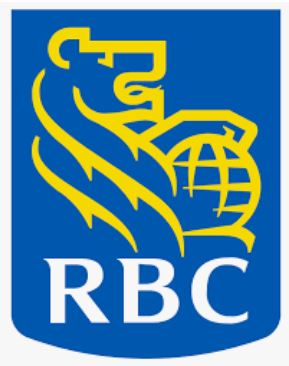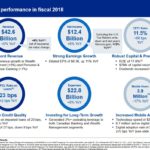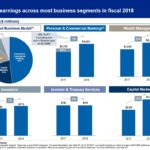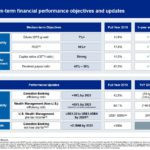Contents
Summary
- RY recently reported record earnings of $12.4B for FY2018. Management anticipates further improvement in FY2019.
- RY has a well diversified business model and maintains a strong Basel III Common Equity Tier 1 (CET1) ratio.
- The bank has a lengthy history of profitability and dividend growth.
- The compound annual growth rate of RY’s dividend is 7% for the 2008 – 2018 timeframe. This includes 2008 – 2010 when the quarterly dividend was frozen at $0.50/share.
- I viewed RY shares as slightly expensive when I wrote my September 5th article. With the subsequent pullback I now view them as fairly valued.
All figures are expressed in CDN $ unless otherwise noted.
Introduction
The first article in this series of articles covering the Big 5 Schedule A Canadian banks touched upon The Bank of Nova Scotia (TSX: BNS) which released its Q4 and FY2018 results and FY2019 Outlook on November 27th.
In this article I very briefly look at The Royal Bank of Canada (TSX: RY) which released its results on November 28th.
In my September 5th article I indicated various headwinds/uncertainties made me reluctant to acquire additional shares in any of the Big 5 other than through the automatic reinvestment of all dividends; RY’s share price has retraced ~6% subsequent to that article.
Canada’s FI Landscape
In previous articles I have mentioned that the Canadian financial institution sector has long been a favorite of mine from an investment perspective. This is because the industry is highly concentrated and protected from outside threats due to government legislation.
The absence of outside competition has allowed Canada’s Schedule A banks to maintain their market share and to retain robust profit margins. I fully recognize this might not be ideal for customers but it certainly has been rewarding for long-term investors!
The following high level statistics might be startling to readers who are unfamiliar with the Canadian Financial Institution (FI) landscape.
- The Big 5 banks dominate the Canadian banking sector and account for ~90% of the Canada’s banking deposits.
- RY and The Toronto-Dominion Bank (TD) have Total Assets in excess of CDN $1T. BNS fell just shy of this CDN $1T threshold having reported CDN $998.5B in Total Assets as of the end of FY2018.
- The Big 5 are recognized globally for their fiscal responsibility. They consistently generate strong returns on equity and are more profitable than their 12 largest U.S. counterparts (based on ROE).
- All 5 have a sterling history of growing their dividend with the only recent blemish being a dividend freeze at the height of the Financial Crisis. Unlike their US counterparts, none of the Big 5 cut their dividend.
- Canada does have a credit union system. The total assets of the largest 100 credit unions (excluding Quebec) as at the end of Q2 2018 amounted to $215.6B. By contrast, The Canadian Imperial Bank of Commerce (CM), Canada’s 5th largest bank, had Total Assets of $597.1B as at the end of Q4 2018!
If you reside in the US, compare the Canadian FI landscape with the US FI landscape where you have 6000 banks and over 7000 credit unions serving 330 million people! Canada has a dominant Big 5 serving ~37 million.
Q4 and FY2018 Results
RY’s Earnings Release can be found here and a detailed investor presentation can be found here.
RY derives ~66% its revenue from Canada with the balance spread primarily across the US and the Caribbean.
It has in excess of CAD $5T of assets under administration and over CAD $650B of assets under management. It also has strong global capital markets operations and holds a dominant share of domestic banking operations.
The wealth-management segment also earns strong returns on equity.
RY remains a top asset manager and in Canada. Strong growth is evidenced in the US where cross-selling and client integration efforts have gone well at the former City National where the focus is on wealth and commercial clients.
In 2018, RY expanded its US footprint by adding new offices in Boston, Washington and New York. It also added teams in the home markets in California and Minnesota.
In FY2018 RY reported record revenue of $43B and it generated earnings in excess of $12B for the first time in the bank’s history. We generated a premium return on equity of 17.6% while maintaining strong capital ratios and one of the highest debt ratings for banks globally.
Source: RY – Q4 and FY2018 Financial Results – November 28 2018
RY generated higher earnings across most business segments with Investor and Treasury Services being the only area of weakness where no growth was evidenced. Despite the absence of growth in this segment, assets under administration reached $4.3T by FYE. RY continues to invest heavily in client-focused technology and has indicated it has a strong client pipeline which should bode well for 2019.
On the Wealth Management front RY generated $11B of revenue and for the first time delivered earnings in excess of $2B.
Source: RY – Q4 and FY2018 Financial Results – November 28 2018
On the November 28th conference call with analysts, RY indicated that North American economic prospects remain solid with strong employment, steady interest rate increases and GDP growth expectations hovering around 2% in the medium term. The bank is optimistic recent trade agreements will provide more opportunities for Canadian businesses to drive future growth.
FY2019 Outlook
Management expects to see YoY weakness in the wealth and wholesale businesses. This is attributed to recent market volatility and because of strong comparative Q1 2018 results.
RY continues to focus on driving down operational costs since it wants to be the lowest cost provider of banking services.
RY fully expects to meet its medium-term objectives in 2019 given the momentum and investments in sales staff and technologies for future growth. The projected interest rate hikes are also expected to benefit RY.
Credit Ratings and Risks
RY’s current ratings and outlook from 4 ratings agencies meet my risk tolerance level.
The Risk Review component of RY’s Q4 Investor Presentation found on pages 16 – 22 provides an overview of the risk aspect of the bank’s various credit related lines of business.
Valuation
RY reported $8.39 of EPS for FY2018 and $8.36 of diluted EPS versus $7.59 and $7.56 in FY2017. This diluted EPS growth of ~10.58% meets RY’s 7%+ medium-term profitability objective.
In FY2012, FY2013, FY2014, FY2015, FY2016, and FY2017, RY reported 12% 12%, 9%, 12%, 0.7%, and 11.5% of diluted EPS growth; FY2016 diluted EPS growth was negatively impacted by RY’s acquisition of City National Bank due to the issuance of common shares.
If we increase RY’s FY2018 diluted EPS of $8.36 by 7% we arrive at projected diluted EPS of $8.95. I am of the opinion, however, that 7% growth is extremely conservative and anticipate 9% growth which would suggest a projected diluted EPS level of $9.11.
RY is currently trading at ~$97.42. Using my projected diluted EPS projection of $9.11 I get a forward diluted PE of ~10.69 (5 year average is ~12.5).
Dividends
RY’s dividend history can be found here.
RY’s current quarterly $0.98/share dividend was recently distributed on November 23.
RY’s last 4 dividend increases have been $0.04/share. I will err on the side of caution and will use a $0.03/share increase in May 2019 and another $0.03/share increase in November 2019 for my purposes. On this basis, investors should expect to receive $4.04 in dividends in 2019 ($0.98 + (2 x $1.01) + $1.04). Using the current $97.42/share price, this forward dividend provides investors with a ~4.15% yield.
Final Thoughts
I recognize we each have personal investment and cash flow objectives, and therefore, RY may not appeal to every investor. I, however, have always viewed RY as a core component of my investment portfolio.
What appeals to me about RY is that it is a high quality large cap company with a consistent track record of profitability and dividend growth. It is the type of company where I don’t have to worry about being deprived of any sleep.
Now, while I view RY as being fairly valued, I do not intend to acquire additional shares as it is already one of my largest holdings. I will, however, continue to automatically reinvest the dividends which should increase my RY exposure by ~30 – 35 shares quarterly.
I hope you enjoyed this post and I wish you much success on your journey to financial freedom.
Thanks for reading!
Note: I sincerely appreciate the time you took to read this article. Please send any feedback, corrections, or questions to charles@financialfreedomisajourney.com.
Disclaimer: I have no knowledge of your individual circumstances and am not providing individualized advice or recommendations. I encourage you not to make any investment decision without conducting your own research and due diligence. You should also consult your financial advisor about your specific situation.
Disclosure: I am long BMO, BNS, CM, RY, and TD.
I wrote this article myself and it expresses my own opinions. I am not receiving compensation for it and have no business relationship with any company whose stock is mentioned in this article.





